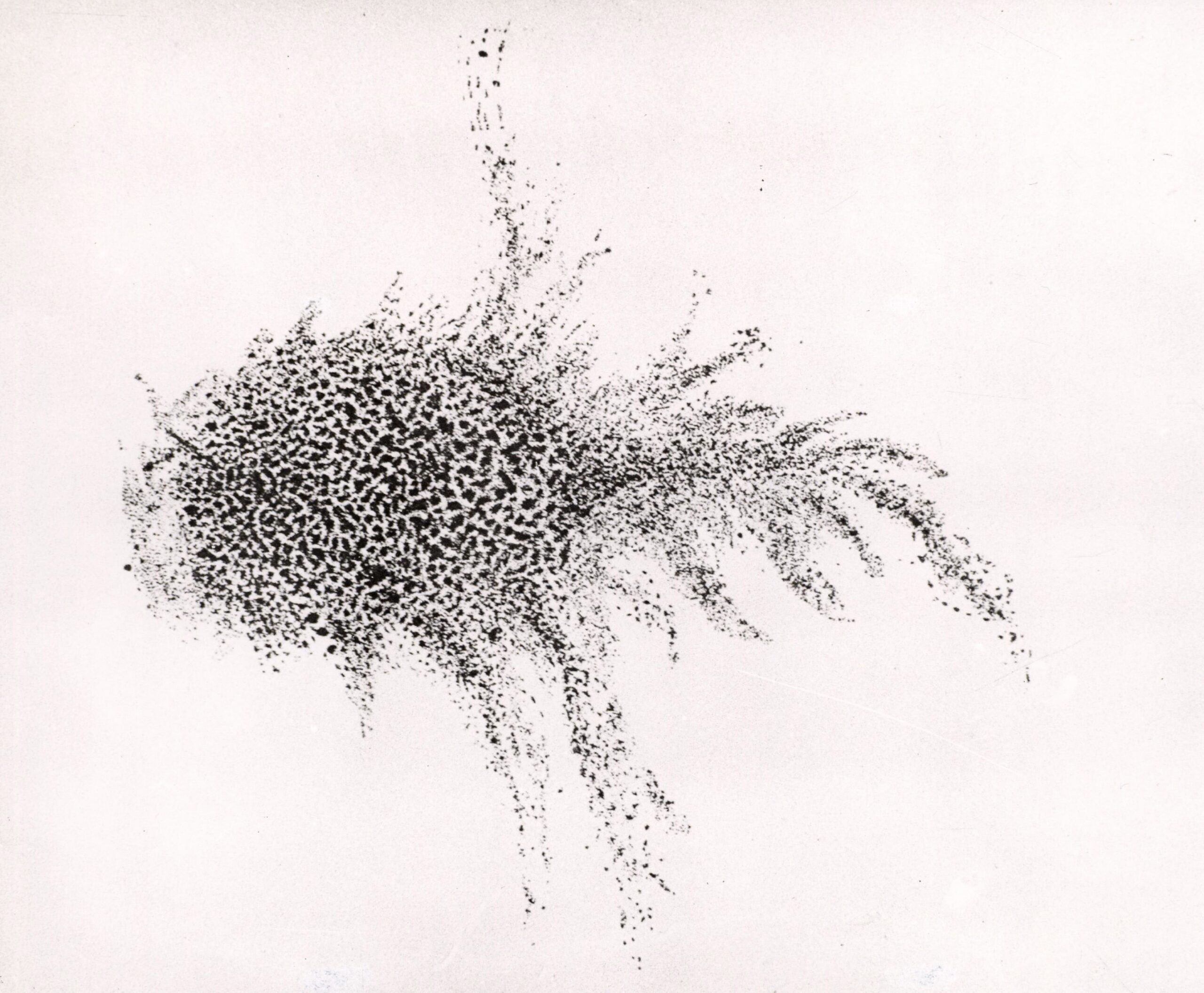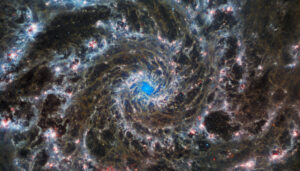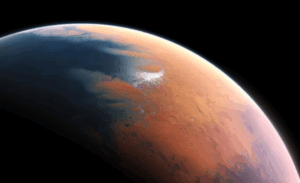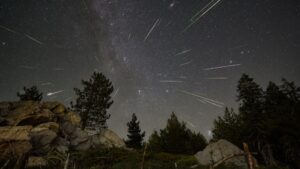The casual observer
April brings us into the season of Djeran, characterised by cool evenings giving way to cooler mornings, if we’re lucky.
Some of the brighter sections of the Milky Way start to become more prominent in the southeast this month. You can start at the Southern Cross and follow the pointers down to the horizon to trace the outline of the brighter parts of our galaxy.

The Lyrids meteor shower runs for the second half of the month, and peaks on Apr 22. These meteors are visible low on the northern horizon, not far from the bright star Vega. This star is part of the constellation Lyra, which gives its name to this shower because of its proximity.
The best time to view this shower is in the morning before sunrise. This shower really is best viewed from further north, but in good conditions you might see a few meteors per hour in this part of the sky. Unfortunately, the bright Waning Gibbous Moon will be a thorn in the side of your observations.

The Full Moon this month occurs when the Moon is at Apogee – its furthest distance from Earth in its orbit. This means the Full Moon will look smaller than average and is sometimes called a Micromoon. In some sense this is the opposite of a Supermoon, but much less reported on.
ISS sightings from Perth
The International Space Station passes overhead multiple times a day. Most of these passes are too faint to see but a couple of notable sightings* are:
| Date, time | Appears | Max Height | Disappears | Magnitude | Duration |
| 6 Apr 05:28 AM | 10° above SW | 68° | 10° above NE | -3.5 | 6 min |
Source: Heavens above, Spot the Station
*Note: These predictions are only accurate a few days in advance. Check the sources linked for more precise predictions on the day of your observations.
Planets to look for
Jupiter and Mars continue to occupy the northwestern sky this month. Jupiter is approaching the western horizon and appears out of the twilight as the Sun sets. You still have a couple more months to see Jupiter in this part of the sky, but it is gradually moving behind the Sun so sooner is better for any observations.

Mars, having hung around Gemini for the last few months, makes a noticeable movement against the background stars. It almost seems to hang there in the northwest while the background stars keep moving by it. That motion of the background stars is actually due to Earth’s motion around the Sun.
The eastern morning sky is an absolute delight as Mercury, Venus, Saturn and (with a telescope) Neptune are all visible before Sunrise. Venus will dominate the eastern sky as the ‘morning star’ for the next 6 months. If you go out on the morning of Apr 25 or 26 you will see the 4 planets joined by the Moon, all within a few degrees of each other.

Constellation of the month
Cancer – the Crab
Cancer is a medium sized constellation located in the northern sky during April evenings. The name comes from the ancient Latin word for Crab, and so it is depicted as thus.

The constellation is a zodiacal constellation, meaning that the Sun’s path through the sky over a year passes through this part of the sky. It is however, the faintest of the zodiacal constellations and is somewhat unremarkable to look at.
The brightest star Beta Cancri comes in at only magnitude 3.5 and everything else is fainter. This star system, about 290 lightyears away, contains an orange giant star about 50 times larger than the Sun orbited by a tiny red dwarf companion.
Parhaps most studied star in this constellation is the faint star 55 Cancri, a star slightly smaller than the Sun orbited by a distant red dwarf. This astonishing star system is known to contain at least 5 planets. In order from the primary star they are: a ‘super Earth’ about 8 times heavier than Earth, a Jupiter-sized gas giant, two Neptune-sized planets, and lastly another Jupiter-sized planet.

Excitingly, the outermost Neptune-sized planet (4th from the star), called 55 Cnc f and also known as ‘Harriot’, is located in the habitable zone of the star. This is the distance from a star where the expected ambient temperature is between 0-100 celcius – the liquid temperatures of water. Being Neptune-sized, astronomers think 55 Cnc f is likely a gas planet, but there is no shortage of speculation that the planet may have moons that could potentially be covered in oceans. More research is needed.

Object for the small telescope
Messier 44 – the Beehive Cluster
Also known as Praesepe, meaning ‘cot’, this open cluster is located right in the middle of Cancer and consists of about 1000 stars. Located around 600 lightyears away, it fills about 1.5 degrees of the sky and is easily visible in binoculars or smaller telescopes. Numerous O-type blue stars are visible, as well as several red giants, representing the late-stage evolution of stars.










